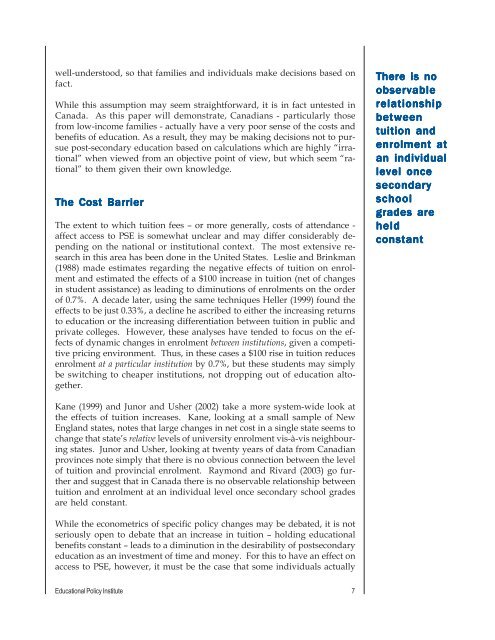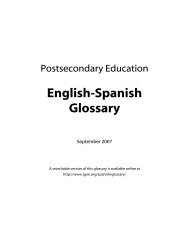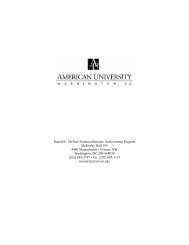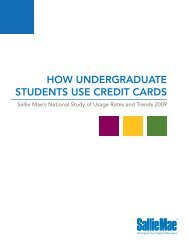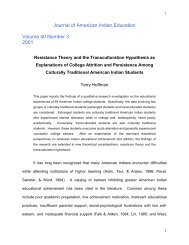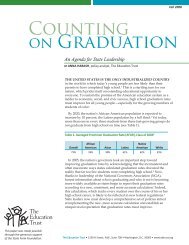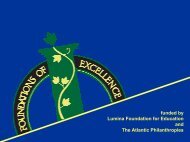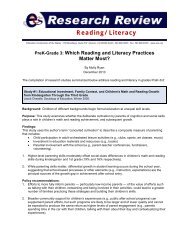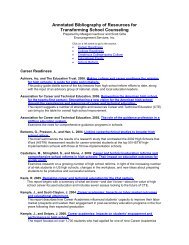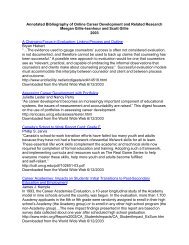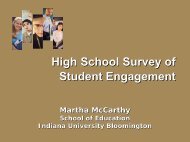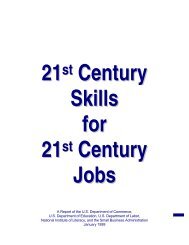A Little Knowledge is a Dangerous Thing: How Perceptions of Costs ...
A Little Knowledge is a Dangerous Thing: How Perceptions of Costs ...
A Little Knowledge is a Dangerous Thing: How Perceptions of Costs ...
- No tags were found...
You also want an ePaper? Increase the reach of your titles
YUMPU automatically turns print PDFs into web optimized ePapers that Google loves.
well-understood, so that families and individuals make dec<strong>is</strong>ions based onfact.While th<strong>is</strong> assumption may seem straightforward, it <strong>is</strong> in fact untested inCanada. As th<strong>is</strong> paper will demonstrate, Canadians - particularly thosefrom low-income families - actually have a very poor sense <strong>of</strong> the costs andbenefits <strong>of</strong> education. As a result, they may be making dec<strong>is</strong>ions not to pursuepost-secondary education based on calculations which are highly “irrational”when viewed from an objective point <strong>of</strong> view, but which seem “rational”to them given their own knowledge.The Cost BarrierThe extent to which tuition fees – or more generally, costs <strong>of</strong> attendance -affect access to PSE <strong>is</strong> somewhat unclear and may differ considerably dependingon the national or institutional context. The most extensive researchin th<strong>is</strong> area has been done in the United States. Leslie and Brinkman(1988) made estimates regarding the negative effects <strong>of</strong> tuition on enrolmentand estimated the effects <strong>of</strong> a $100 increase in tuition (net <strong>of</strong> changesin student ass<strong>is</strong>tance) as leading to diminutions <strong>of</strong> enrolments on the order<strong>of</strong> 0.7%. A decade later, using the same techniques Heller (1999) found theeffects to be just 0.33%, a decline he ascribed to either the increasing returnsto education or the increasing differentiation between tuition in public andprivate colleges. <strong>How</strong>ever, these analyses have tended to focus on the effects<strong>of</strong> dynamic changes in enrolment between institutions, given a competitivepricing environment. Thus, in these cases a $100 r<strong>is</strong>e in tuition reducesenrolment at a particular institution by 0.7%, but these students may simplybe switching to cheaper institutions, not dropping out <strong>of</strong> education altogether.There <strong>is</strong> noobservablerelationshipbetweentuition andenrolment atan individuallevel oncesecondaryschoolgrades areheldconstantKane (1999) and Junor and Usher (2002) take a more system-wide look atthe effects <strong>of</strong> tuition increases. Kane, looking at a small sample <strong>of</strong> NewEngland states, notes that large changes in net cost in a single state seems tochange that state’s relative levels <strong>of</strong> university enrolment v<strong>is</strong>-à-v<strong>is</strong> neighbouringstates. Junor and Usher, looking at twenty years <strong>of</strong> data from Canadianprovinces note simply that there <strong>is</strong> no obvious connection between the level<strong>of</strong> tuition and provincial enrolment. Raymond and Rivard (2003) go furtherand suggest that in Canada there <strong>is</strong> no observable relationship betweentuition and enrolment at an individual level once secondary school gradesare held constant.While the econometrics <strong>of</strong> specific policy changes may be debated, it <strong>is</strong> notseriously open to debate that an increase in tuition – holding educationalbenefits constant – leads to a diminution in the desirability <strong>of</strong> postsecondaryeducation as an investment <strong>of</strong> time and money. For th<strong>is</strong> to have an effect onaccess to PSE, however, it must be the case that some individuals actuallyEducational Policy Institute 7


